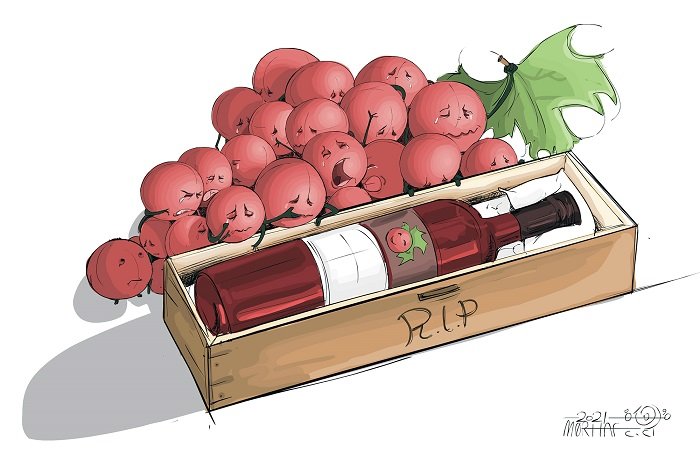Let’s not let wine be demonized. Moderate wine consumption represents an equally moderate risk and even has some positive aspects.
Wine and alcohol, devilish embrace? Alcoholic beverage intake is responsible for about 4 percent of cancer cases worldwide, and 14 percent of these affect even so-called moderate drinkers. The fact is irrefutable and has been repeated many times in recent years starting when Ireland, the first and only country in Europe (for now), decided to write on alcohol labels the diction “seriously harms health,” which already exists for tobacco.
However, if we try to read that data in another way it follows that 96% of cancer cases are NOT due to alcohol, that only 0.56% affect moderate drinkers, and that therefore 99.44% of cancer cases do not affect them. It is a simple change of perspective leaving the data as is, nothing else, but the music seems very different.
Let me give you some more data. In 1986 in Italy wine consumption was 68 liters per capita, today it is around a little more than half, 37 liters. Production was 77 million hectoliters and in 2024 around 41. This means that without special laws aimed at limiting consumption, the population seems to have self-regulated for various reasons, from diets to the use of different drinks.
Wine and alcohol? Let’s talk about moderate drinking
All this is by no means meant to say that alcohol is good for you, let’s be clear. But only that moderate use of alcoholic beverages, and wine in particular, poses an equally moderate risk and even has some positive aspects. Wine, in fact, is not just alcohol. At least 80 percent of it is water, then there are polyphenols, organic acids, mannoproteins. Culturally, it has been part of the tradition of Mediterranean peoples for millennia.
If today we put all Italian vineyards together these would cover an area larger than that of Liguria, it is about 6,000 square kilometers, which means that viticulture is an integral and characterizing part of our landscapes and territories.
Wine production involves about a million people in various capacities, and many producers are also the ones who take charge of maintaining dry stone walls, country roads, and stormwater drains, and where there are vineyards there are fewer landslides and mudslides.
This is not a matter of self-defense
Of course, wine is my passion, it is my job, but here I am providing data and making arguments, not defenses of office. And some questions, going back to the cancer cases linked to moderate consumption, I would ask. But were those 0.56 percent of people (14 percent of 4 percent), which should not be underestimated anyway, for goodness sake, affected by cancer only because of moderate consumption of alcoholic beverages? Are there also concomitant causes? Do they live in large cities with polluted air? Are they heavy smokers? Are they overweight? Do they have other forms of disease? Maybe not. But it seems legitimate to ask some questions to try to understand how serious the problem is. If by any chance there is not a kind of overkill in the medicalization of lifestyles, which this time affects wine, but may involve many other aspects in the future.
And this, I repeat, is not at all to underestimate the problems associated with alcohol abuse, but only to argue that between abuse and moderate use there is a big difference, and only by dealing non-ideologically with a problem, in many ways a very serious one, can we attempt to understand it deeply.
I close by telling you a personal fact. My father passed away at the age of 101; since he was 15 he drank at least one glass of wine a day. He was a moderate drinker, therefore, he never had cancer and evidently to him that little bit of wine gave only happiness.
The vignette used for the opening is by Youssef Morhaf, “Wine and afterlife,” from the Spirito di Vino (eno)satire contest, edition 2021, Over 35 category, organized by the Movimento Turismo del Vino Friuli Venezia Giulia.





